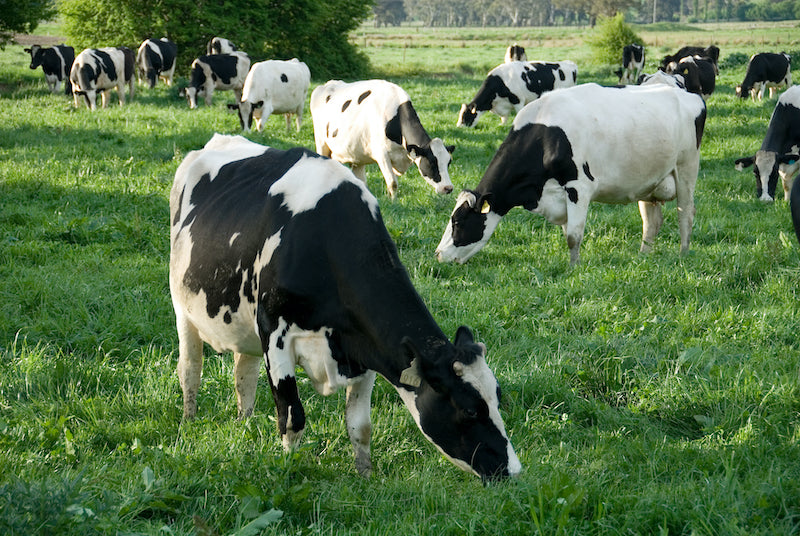You may have encountered grass-fed whey in your shopping at some point but, like many people you may not fully understand why it matters whether that cow ate grass or not.
To help you appreciate grass-fed whey, and exactly what benefits it offers, consider these facts.
More Omega-3s
Any meat or dairy sourced from grass-fed cows has several distinct nutritional advantages over the more common feed-lot options. We'll discuss these in greater detail later.
For now, however, let's focus on the fact that grass-fed whey contains high levels of omega-3 fatty acids. This is the same highly-beneficial fat is that found in salmon and other fatty fish.
More CLAs
In addition to packing more omega-3s, grass-fed whey also contains more conjugated linoleic acids (CLAs) than the grain-fed varieties.
This special group of fats have a unique structure and function in your body – influencing several aspects of your overall health.

Less Saturated Fats
While modern research has found that saturated fats aren't as bad for you as we once thought, high levels of them still aren't great, either. In grass-fed whey protein, these fats are kept to a minimum.
Improved Body Composition
Both omega-3s and CLAs have shown potential when it comes to reducing body fat and improving overall metabolism.
For example, CLAs, directly influences a molecular signaling receptor family named PPAR that controls your metabolism of fats and carbs, while also influencing levels of the steroid hormones that direct muscle growth and body composition.
Increased Brain Function
By increasing the blood flow to the brain while also reducing inflammation, omega-3s can improve memory, mood and brain function. The fats have also shown promise as a way to slow cognitive decline.
Reduced Inflammation
As mentioned, omega-3s fight inflammation. This action, however, is not confined to your brain but takes place throughout your system. Interestingly, CLAs play a similar role.

Grass-fed whey, then, can help to reduce inflammation caused by any number of issues and may even help to speed up exercise recovery.
Fewer Additives
Because grass-fed whey is produced in more a natural setting, manufacturers like Naked Nutrition don't mess with it. Granted, this isn't true of all companies so you'll want to keep an eye on your ingredients label. Sadly, some companies start with a high-quality whey and then ruin it will all sorts of chemicals.
More Humane Farming
People are often surprised to learn that it's a big deal that some whey is grass-fed. After all, don't all cows eat grass? They should. However, this method of farming required more land and can make it more difficult for the farmers to oversee their animals.
To make things faster and more convenient, then, many farmers use the feed-lot model; packing the cows into a smaller area where they are given chemically treated grain-based foods.

Cows in a feedlot eating chemically treated grain-based foods
Ecologically Responsible
Stuffing all of the cows into a small fed-lot tends to produce a lot of pollution – both from the cows themselves and from the fertilizers and pesticides used to grow their specialized goods.
Grass-fed cows however, eat grass. And that grass is not treated with any chemicals that can then wash away and impact the environment at large.
Hormone, GMO and Antibiotic Free
Another seeming advantage of the feed-lot system is that the cows can easily be treated with hormones and antibiotics. This is typically not the case with grass-fed cows.
Plus, the food provided in the feed-lot is often taken from a GMO crop. The same is not true of the grass on which cows pasture.













